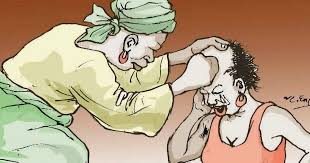Practice and Correlates of Widowhood Rites in A City in North Central Nigeria

Abstract:
Objectives: This study determined the practice
and correlates of widowhood rites in a city in North-central Nigeria.
Methodology: A descriptive
cross-sectional design was used for the study. Multistage sampling technique was used
to recruit 450 respondents into the study. Interviewer administered questionnaire
and two focus group discussions were used for data collection. Data analysis was
done using Epi-info version 3.5.3. A p-value of 0.05 or less was regarded as statistically
significant. The study included all males and females over 18years of age residing
in Ilorin South Local Government Area.
Results: The age range of respondents was between
20 – 79 yrs. A quarter of all respondents (25.9%) were in the fifth decade of life.
Widowhood rites commonly practiced in Ilorin South LGA as identified by more than
70% of the respondents include; preventing the widow from going to the farm and
market during the mourning period and preventing her from doing household chores.
About 16.2% of respondents had ever practiced one or more forms of widowhood rites.
There was a statistically significant relationship between age, gender, religion,
marital status, educational level, ethnicity and occupation of respondents and the
practice of widowhood rites (p< 0.05).
Conclusion: Widowhood rites are observed across
different categories of people. Age, gender, religion, marital status, educational
level, ethnicity and occupation were significantly associated with practice of widowhood
rites. There is a need for legislation against harmful widowhood rites by relevant
stakeholders.
Keywords: Widowhood Rites, Ilorin, Nigeria.
References:
[1]. Aderibigbe, S.A., Lawal, M.O., Olatona, F.A.,
Sekoni, O.O., Goodman, O.O., Olubiyi, S.K., Olaosebikan, M.S. (2017). Knowledge
and perception of widowhood rites among adults in Ilorin, Kwara State. Trop. J.
Health Sci. 24, 1-7–7.
[2]. Aderinto, A. (2000). Wives of the grave: A study of
widowhood rites and wife inheritance in Ondo and Ekiti states., in: Rights and
Widowhood Rites in Nigeria. Inter African Committee on Traditional Practices
Affecting the Health of Women and Children, Lagos, Nigeria, pp. 12–18.
[3]. Aransiola, J.O., Ige, A. (2010). Widowhood Practices
among the Yorubas of South-West Nigeria: Are Differences in what Women
Experience due to their Status. Gend. Behav. 8, 3152–3167. https://doi.org/10.4314/gab.v8i2.61939.
[4]. Fasoranti, O., Aruna, J. (2015). A cross-cultural
comparison of practices relating to widowhood and widow-inheritance among the
Igbo and Yoruba in Nigeria. J. World Anthropol. 3, 53–73.
[5]. Ilika, A.L., Ilika, U.R. (2017). Eliminating
Gender-Based Violence: Learning from the Widowhood Practices Elimination
Initiative of a Women Organisation in Ozubulu, Anambra State of Nigeria. Afr.
J. Reprod. Health 9.
[6]. Izuako, O. (2003). Obnoxious Widowhood Rites in
Nigeria: Looking through Gender Lens, in: Nigeria Violence Against Women.
BAOBAB Tree, Lagos, Nigeria, pp. 3–4.
[7]. Kabir, Z. (1991). Widowhood Practices in Northern
Nigeria.
[8]. Mezieobi, D.I., Mezieobi, S.A., Iyamu, E.O.S.
(2011). Widowhood Practices among Igbos of South Eastern Nigeria as a Betrayal
of the Fundamental Human Rights of Women. Lwati J. Contemp. Res. 8.
[9]. Nwadinobi, E. (2001). Fighting Back Against
Prejudice and Discrimination. Presented at the Widoes Without Rights
Conference, London.
[10]. Okoye, P.U. (2001). Widowhood practices: the case of
Enugu State. NUCIK Publishers.
[11]. Owasanoye, B., Ubaka, C.O., Ahonsi, B.,
Friedrich-Ebert-Stiftung, (1997). Widowhood in Nigeria: Issues, Problems, and
Prospects. Friedrich Ebert Foundation and Human Development Initiatives.
[12]. Sossou, M.-A. (2002). Widowhood practices in West
Africa: the silent victims. Int. J. Soc. Welf. 11, 201–209. https://doi.org/10.1111/1468-2397.00217.
[13]. United Nations (2001). Widowhood: Invisible Women,
Secluded or Excluded. United Nations, Division for the Advancement of Women,
Department of Economic and Social Affairs.
[14]. Wells, Y.D., Browning, C. (2002). Widowhood.
USA/UK/Germany: Macmillan Reference USA/Gale Group/Thomson Learning.

